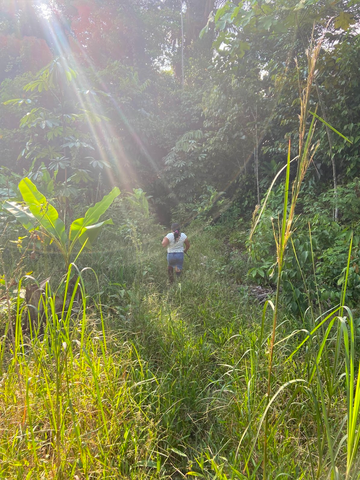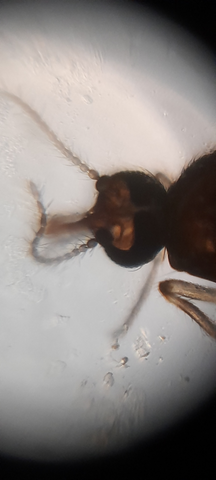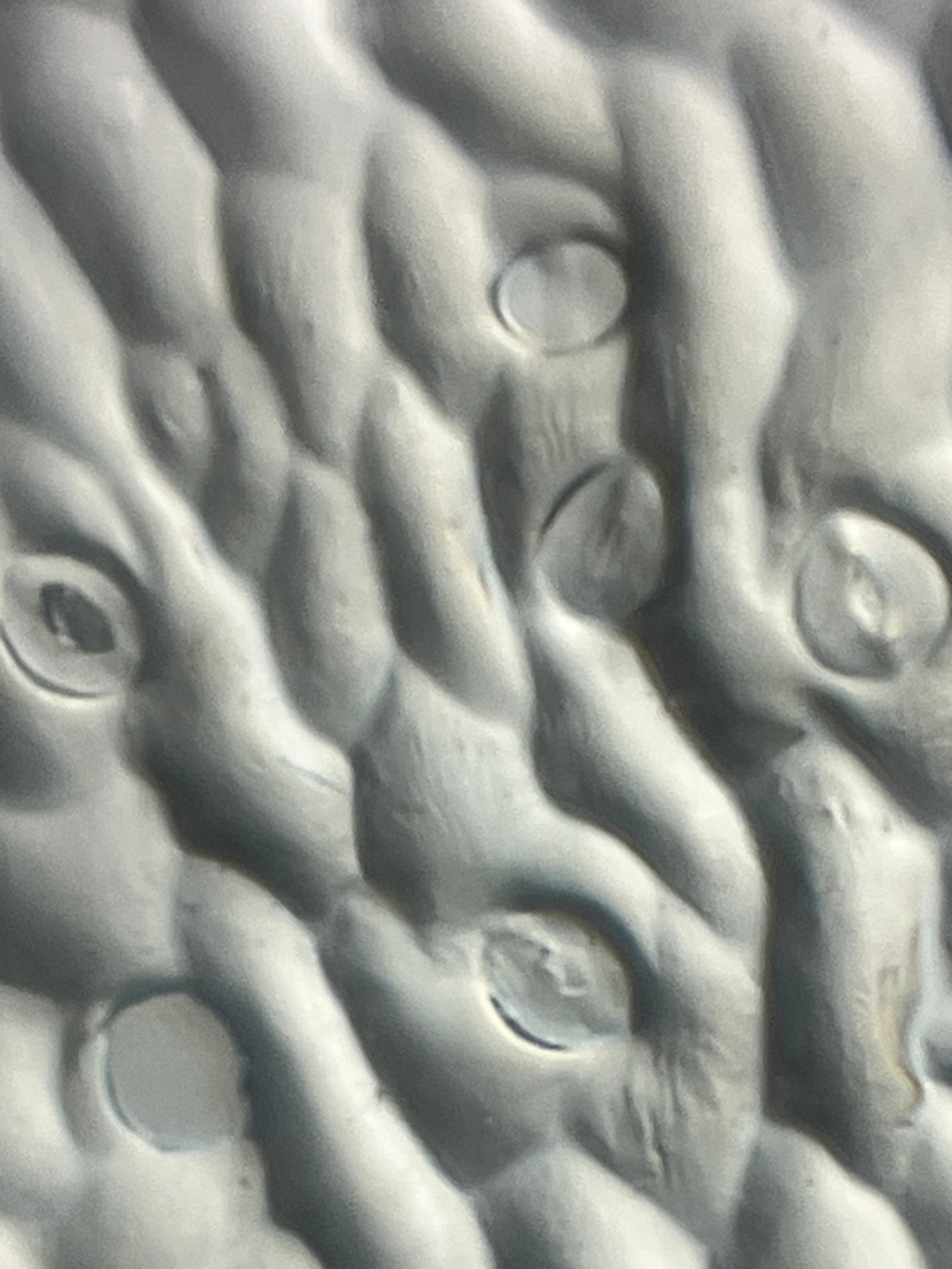by Paola Moreno-Roman
Day Three
Each night, I sleep better. I think my body is starting to feel safe in this new environment. After having breakfast at the lodge, we headed to the Sucusari community.

Did you know stingless bees exist? I didn’t until I joined the planning for this expedition. A few species of stingless bees live in trunks of trees in the Amazon. Beekeeping is a sustainable source of income. For this reason, theNGO One Planet has been training Maijuna indigenous people how to raise and care for native stingless bees.
When we got to the Sucusari community, we had a meeting with all the beekeepers from the community to go over the logistics for the next few days. For us, it is important to listen to local beekeepers comments and based on that make edits to the plan. Afterward, we went to Magnolia and Hilder’s house. Both are beekeepers and have quite a few hives in their house. Magnolia and Hilder showed us how to split a stingless bee hive into two. It was my first time seeing stingless bees. I loved being able to get so close to the bees without the fear of getting stung. This was also a great opportunity for Deb and I to collect a lot of samples that later on we will look under the Foldscope: pollen, honey, propolis, flowers of what the bees get pollen from, etc.


In the afternoon, after lunch and a short nap, I went into the river to cool down and swim for a little bit. It was so fun! The floor was clay. It was like a massage to my feet. While we were resting in the hammocks afterwards, some of the Maijuna kids were playing near us so I decided to teach them how to use the Foldscope. Unfortunately, I had left my clear tape in my room and the only tape that they had was not clear so it was hard to see the samples we collected. I am excited to show them how to use the Foldscope tomorrow!

After the rest of the team arrived from their explorations, we went to the museum and learned about the Maijuna community. I learned that Maijuna men used to wear big earrings “O” shaped, about different tools they used to cook, etc. Afterwards, they had a small fair for us where they offered and sold their products. They told us that this was the first time they were selling their products in 2 years due to the pandemic. They were so happy because we bought a lot. Other people from the community came as well, a few of them had monkeys as pets.



Photo credit: Paola Moreno-Roman
After the sunset, we went back to the lodge for dinner and to debrief. We all were pretty exhausted. I took a shower and went to sleep.
Day Four
People are starting to get sick. A couple of members of the expedition decided to stay at the lodge to rest. My stomach was bugging me a little bit but not too much so after breakfast, I went to the Sucusari community to keep learning from and about them and support the team in what was needed.

A woman from the community taught me how to make masato, a traditional fermented beverage from the Amazon. The steps are: boil yucca until fully cooked, mash it, chew and spit it, keep mashing it, add water of boiled yucca and a little bit of sugar, once it is a mushy mix put it in a container and let it ferment for a few days.



Photo credit: Paola Moreno-Roman
Deb and I continued collecting samples. With the help of Elizabeth Benson, we looked at many bee hives and saw different species of stingless bees. We also got to taste a raw honey directly from the hive! A fun anecdote was that some bees started resting on Deb’s hair - the bees and the products they made looked like a beautiful hair accessory.



At lunchtime, we headed back to the lodge to eat and rest. Deb and I had planned on continuing gathering samples in the afternoon but she felt very sick so she went to rest. Part of the team was going to have a meeting with Walter, president of the FECONOMAI (Federación de Comunidades Maijuna) and other Maijuna community leaders. There were three Maijuna boys amongst the group: Estrin, Muller, and Danielito, who were children of Maijuna community members. Since they were just playing while they waited for the adults to finish the meeting, I decided to teach them how to use the workshop.
Estrin, Muller and Danielito were great at catching insects. They were super excited when collecting samples and were so surprised when they looked at a huge ant through their Foldscopes.



Photo credit: Paola Moreno-Roman
Late afternoon, I decided to join the filmmaking team to help with the ‘finding the beehive’ recording. We headed back to the Sucusari community to scout the place where the recording will happen the following day. We walked a lot and the mosquitos were biting me non-stop, but it all paid off when I got to see a stingless beehive on a tree!


Photo credit: Paola Moreno-Roman
Afterwards we got back to the lodge. My stomach kept bugging me so I went to bed early to rest.
Day Five
Every morning, we walk for 30 minutes from our lodge to the river dock, there we get on our boat to head to the Sucusari community. On my walk today, I saw these caterpillars making a really interesting formation.

Today is an exciting day because I will start training Maijuna members on how to use the Foldscope. I met with Douglas, President of the Association of Maijuna Beekeepers, and showed him and a few of his children how to use the Foldscope and prepare samples. It was amazing to see his face full of awe and wonder, and to see him share his excitement with his wife.



Photo credit: Paola Moreno-Roman





Afterwards, I joined the filming crew that were filming Magnolia and Hilder, local beekeepers, collecting bees from a trunk and bring them home. It was fun to see the whole process and help with translations when needed, but the mosquitos feasted on us. We went home a bit late - the boat ride to the lodge is always so beautiful.






